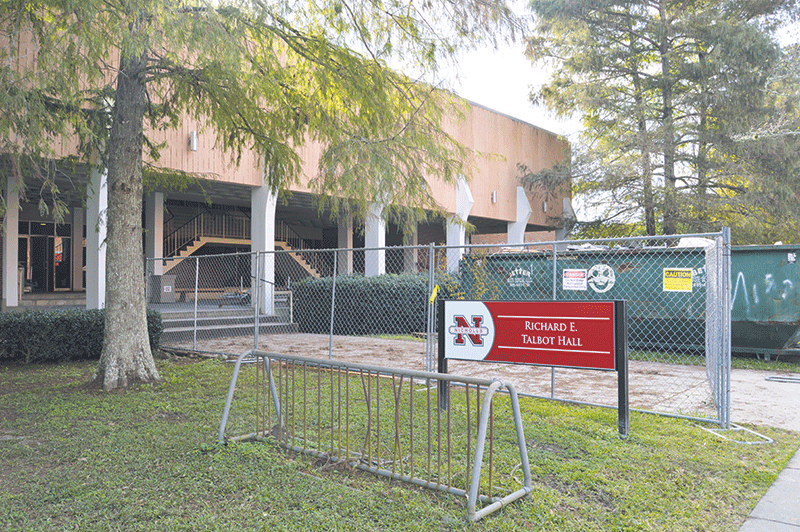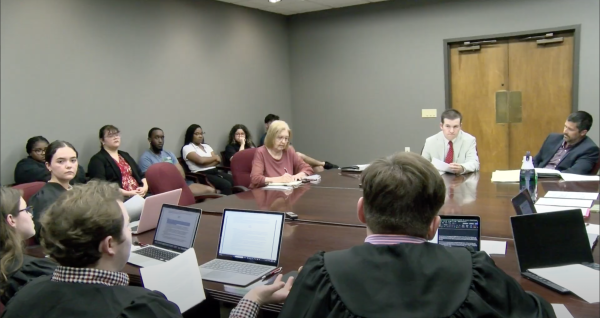Talbot Hall renovation includes an abestos abatement process
Photo by: Sydney Landry
Internal renovations cause Talbot’s front entrance to be closed until further notice.
Renovations to Talbot Hall at Nicholls State University resulted in a public concern with the asbestos abatement process.
The renovations, which started on Aug. 10, involve an asbestos abatement process to safely remove the hazardous material. Asbestos safety signs and warnings have been placed around the construction to guide individuals safely.
“This is not the first time this has been done,” Mike Davis, director of facility services, said. “This is not the last time, and there are stringent rules and regulations that have to be adhered to the removal of anything containing asbestos, and we strictly adhere to it in this project.”
Asbestos is a set of naturally occurring silicate minerals and is commonly used in construction materials, especially since the 1960’s. Inhalations of asbestos fibers are known to cause serious and fatal illnesses including mesothelioma, lung cancer and asbestosis.
For asbestos to be harmful to the human body, it has to be ‘friable,’ which means easily crumbled. This form of asbestos is considered harmful due to its ability to release fibers into the air for possible inhalation.
“If a fiber gets loose it the air, it gets sucked up by HEPA filters and it goes through several filters. There’s air monitoring, even the exhaust air that’s going out, is monitored,” Davis said.
Because of this dangerous yet versatile material, renovations to Talbot include an abatement process to remove all forms of harmful materials. Professionals who have the proper certificates and meet qualifications must handle this process, which has defined laws about the legal removal of asbestos.
Brian Clausen, director of environmental health and safety, said, “Nobody is allowed by the Louisiana Department of Environmental Equality to remove or work on any asbestos without the proper certification or credentials, from the inspection to the management planner to the team removing it. There are set regulations, set permits that they have to have in place prior to the first removal of anything.”
Gill Industries handles the abatement in Talbot Hall under the asbestos plan put together by Louisiana Envirotest Engineering Inc. These plans and firms were hired by the architect of the project, Eskew + Dumez + Ripple.
“Facility Planning and Control, part of the division for administration, are responsible for construction on campus, and in the state,” Davis said. “This is a state project so they’re in charge of it. They hired the architect, the hiring of the subcontractors, so they all report in to them.”
At Nicholls State University, most of the buildings involve asbestos in their building materials. Specifically in Talbot, it is in the ceiling tiles, floor tiles, mastic and the sheetrock mud.
Asbestos was included in over 3,000 construction products in the 60’s & 70’s. The silicate mineral was prided as very sound absorbent and its multiple resistances including fire, electrical and chemical resistance.
“We actually did a controlled test. I went out and tested the same areas from Nicholls to back up results. The definition of asbestos containing material is one percent, so if anything has one percent asbestos, we abate it. When we ran tests on our areas, we received about two percent to five percent. Even though it’s only five percent of the total material, we treat it as 100 percent and handle it accordingly.” Clausen said.
Davis said his team understands that asbestos abatement with the Tyvek suits, masks and breathing apparatuses so the general public gets worried.
If anyone has any concerns over their safety or a particular situation, please contact Brian Clausen at 448-4783.














